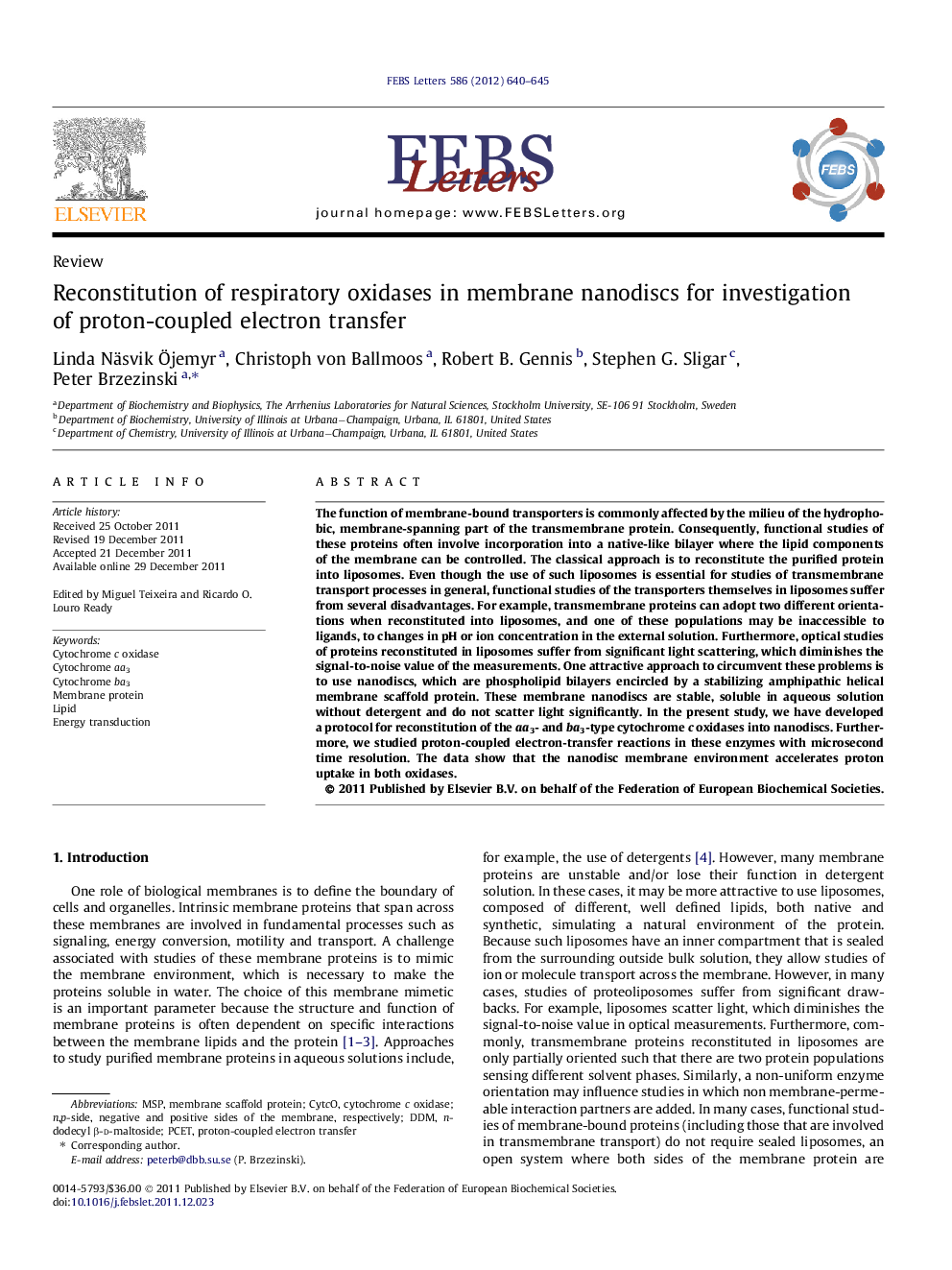| Article ID | Journal | Published Year | Pages | File Type |
|---|---|---|---|---|
| 10871819 | FEBS Letters | 2012 | 6 Pages |
Abstract
The function of membrane-bound transporters is commonly affected by the milieu of the hydrophobic, membrane-spanning part of the transmembrane protein. Consequently, functional studies of these proteins often involve incorporation into a native-like bilayer where the lipid components of the membrane can be controlled. The classical approach is to reconstitute the purified protein into liposomes. Even though the use of such liposomes is essential for studies of transmembrane transport processes in general, functional studies of the transporters themselves in liposomes suffer from several disadvantages. For example, transmembrane proteins can adopt two different orientations when reconstituted into liposomes, and one of these populations may be inaccessible to ligands, to changes in pH or ion concentration in the external solution. Furthermore, optical studies of proteins reconstituted in liposomes suffer from significant light scattering, which diminishes the signal-to-noise value of the measurements. One attractive approach to circumvent these problems is to use nanodiscs, which are phospholipid bilayers encircled by a stabilizing amphipathic helical membrane scaffold protein. These membrane nanodiscs are stable, soluble in aqueous solution without detergent and do not scatter light significantly. In the present study, we have developed a protocol for reconstitution of the aa3- and ba3-type cytochrome c oxidases into nanodiscs. Furthermore, we studied proton-coupled electron-transfer reactions in these enzymes with microsecond time resolution. The data show that the nanodisc membrane environment accelerates proton uptake in both oxidases.
Keywords
Related Topics
Life Sciences
Agricultural and Biological Sciences
Plant Science
Authors
Linda Näsvik Ãjemyr, Christoph von Ballmoos, Robert B. Gennis, Stephen G. Sligar, Peter Brzezinski,
